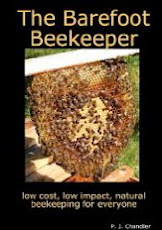.jpg)
.jpg)
In the wild, bees will build their hive in a tree hollow or some similar structure. While perfectly good enough for the bees, in this location it was difficult for man to take their honey - hence the invention of artificial beehives, which have actually been around since about 2,500 BC.
Currently the Egyptians hold the place of the earliest civilization recognized to have beekeepers. Bees served several primary jobs for them. Produce honey for consumption and pollinate all the local crops. Beeswax was used as well as a sealant and during the mummification process.
Rather than the modern beehive we recognse today, the Egyptians kept bees in straw baskets called skeps. The main disadvantage of these was that to harvest the honey, the skep had to be destroyed and all the bees died.
Today we still use all of these resources provided by the bee. But to make for an easier collection of these consumables, several styles of hives are available on the market. You will find four common modern or artificial movable frame beehives. These include the Langstroth hive, the national hive, the commercial hive, and the WBC hive.
Reverend Lorenzo Langstroth patented the movable-frame type of beehive In the mid-1800s. Langstroth who is known today as the "Father of American Beekeeping" realized that when he created an organized structure of frames with a specific distance between the frames (known as bee space), the bees would build their combs in a manner that the frames could be removed to gather honey without destroying the hive. Bees would not seal the hive with honeycomb nor with propolis. Propolis is a resinous mixture gathered by bees to seal off unwanted hive spaces.
The national hive was derived from the Langstroth model. It is the most common type in you'll find in the United Kingdom. It's brood box is smaller than that of the Langstroth. While the space may be too small for the modern productive bee, the great advantage to this particular design is that it is much easier to handle when it is full of honey.
The WBC hive, named after William Broughton Carr, its designer, is the classic traditional beehive. It has the unique quality of carrying a double wall as opposed to the single walls found on other movable frame models. The outside of the box is designed in pyramidal sections. Inside are loose separate boxes that hold the frames.
The commercial hive houses deep frames that can hold massive amounts of honey. It is similar to the national in design but is created on a much larger scale for commercial purposes.
You may now realize that not all bees are the same, and neither are their homes. Whatever facet of beekeeping you decide to pursue, keep in mind these types of beehives when considering which may be the right home for your bees.
Val Wilson is passionate about all things beekeeping! It is an incredibly rewarding hobby in so many ways, so if you would like more information about how to start beekeeping, go to www.bestbeekeeping.com and sign up for the FREE 7 day beekeeping ecourse. |













